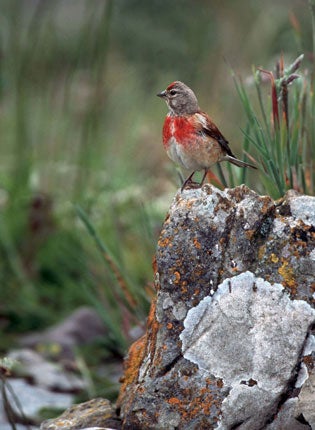Cuts will destroy rarest habitats in Britain, warn conservationists

Your support helps us to tell the story
From reproductive rights to climate change to Big Tech, The Independent is on the ground when the story is developing. Whether it's investigating the financials of Elon Musk's pro-Trump PAC or producing our latest documentary, 'The A Word', which shines a light on the American women fighting for reproductive rights, we know how important it is to parse out the facts from the messaging.
At such a critical moment in US history, we need reporters on the ground. Your donation allows us to keep sending journalists to speak to both sides of the story.
The Independent is trusted by Americans across the entire political spectrum. And unlike many other quality news outlets, we choose not to lock Americans out of our reporting and analysis with paywalls. We believe quality journalism should be available to everyone, paid for by those who can afford it.
Your support makes all the difference.Catherton Common reverberates with the distinctive song of skylarks. It boasts stunning views over the Shropshire countryside and is one of the most valuable spots for plants anywhere in Britain.
Just two years ago, its huge botanical diversity and nationally important populations of adders and other struggling native reptiles were under threat of disappearing. The farmers putting animals to graze the land were on the verge of giving up and the common would have deteriorated into scrubland with their departure.
The Shropshire Wildlife Trust determined to save the rare landscape from a damaging decline and bought the 527-acre common, a Site of Special Scientific Interest, to keep grazing going.
To buy the land in the Clee Hills, the trust was reliant on money provided by the aggregates levy sustainability fund, a scheme which has just been scrapped by the Government in a move that wildlife organisations have warned will make it far harder to protect the natural environment.
Until the Department for Environment Food and Rural Affairs decided to axe it as part of its cost-cutting programme, the fund provided £35m a year to reduce the environmental impacts of the aggregates industry as it dug sand, rock and gravel from the ground. Now the money, while still being collected as part of the aggregates levy as an environmental tax, will go straight into the Treasury's coffers.
John Hughes, of the Shropshire Wildlife Trust, said the loss of the fund will damage the ability of environmental groups to protect the landscape: "We weren't happy to hear the fund was disappearing. [It] has done so much environmental good to a county like Shropshire which has a lot of aggregate sites. The fund was addressing the blight that comes with aggregates extraction."
Seventy of the county's quarries qualified for payments from the fund. Of the Shropshire Wildlife Trust's 38 nature reserves, more than half contain or are next to disused quarries.
The Wildlife Trusts are urging the Government to reinstate the fund. As part of their efforts to win support, all 47 are writing to MPs in their areas.
Stephanie Hilborne, the Trusts' chief executive, said: "It's a familiar story about reducing... the size of the voluntary sector at a time when our challenges have never been greater. Investment in the environment is one of the best long-term investments you can make for society."
Join our commenting forum
Join thought-provoking conversations, follow other Independent readers and see their replies
Comments